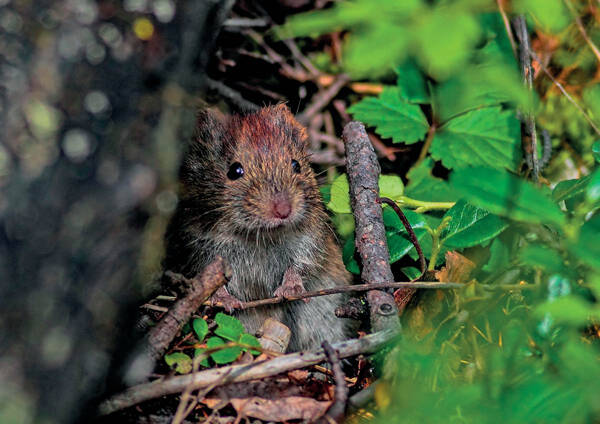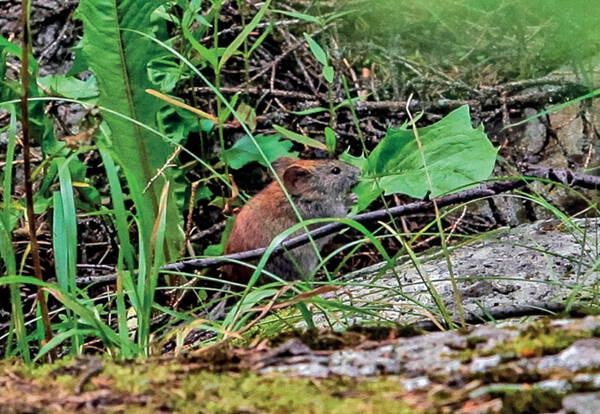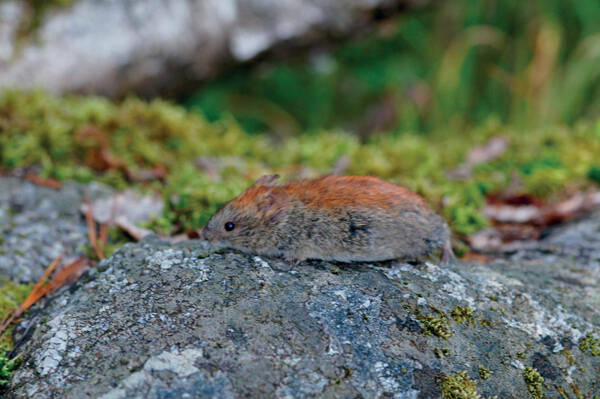Clethrionomys rutilus
IUCN
LCBasic Information
Scientific classification
- name:Clethrionomys rutilus
- Scientific Name:Clethrionomys rutilus,,Myodes rutilus,Northern Red-backed Vole,Clethrionomys rutilus
- Outline:Rodents
- Family:Rodentia Cricetidae Genus
Vital signs
- length:72-123mm
- Weight:
- lifetime:
Feature
The ears are small, the front and hind limbs are short, the tail is densely haired, and the back hair is bright ochre brown or brown-red.
Distribution and Habitat
In China, it is distributed in the three northeastern provinces, the border area between Inner Mongolia and the northeast, and the Altay region in northern Xinjiang. It is widely distributed abroad, in Asia, northern Europe, and North America.
The red-backed shrew is a typical forest-dwelling rodent species, living in spruce forests, mixed forests, riverside forests, terrace forests, slope forest edges, and forest grasslands. It also lives in the remains of poplar and birch forests and broad-leaved sparse forests, and can even be seen in hazel bushes, willow bushes, and farmland.
Appearance
The individuals are small, with body length usually less than 100mm, and short tail, about 1/4 of the body length, not more than 1/3. The distinctive feature is the red or reddish-brown color on the back of the body. The abdominal hair is lighter, gray to light yellowish brown. The coat is fine and downy. On the skull, the posterior edge of the palatine bone is completely interrupted, which is a typical palatine-like bone. There are 3 deep folds on the lingual side of maxillary M3. Compared with Brownback., Brownback. Maxillary M3 has only 2 deep folds on the lingual side, the tail length ratio is larger, and the individual is larger. Compared with velvet rats, the teeth of this species have tooth roots, while velvet rats have no tooth roots and grow throughout their lives.
Details
Red-backed voles belong to the subfamily Microtiinae. The species-level classification status is stable, and there are many subspecies differentiations. There are 2 subspecies in China. It is a typical cold-resistant species in the north. The population in meadows and wetlands in coniferous forests is large. It has a certain harm to young forests.

Red-backed voles are active frequently at night, and occasionally during the day, but the number of times is small. They do not hibernate and are active all year round.
Red-backed pheasants often live in the dead branches and leaves layer. Their caves are often built under tree roots or beside fallen trees. They use the decayed tree root holes as tunnels. The caves are very simple, with only nests, and their nests are padded with hay, leaves, etc. In winter, there are caves on the snow surface and interwoven tunnels in the snow layer. Since the temperature under the snow is 10-20℃ higher than the air temperature, they often move under the snow in winter.
Red-backed pheasants feed on plants. The diet varies greatly with the seasons. In late spring and early summer, it mainly eats the green parts of plants, as well as flowers and berries. In autumn, it likes to eat seeds of various plants, such as red pine, hazelnut and linden seeds. In winter and spring, it mainly feeds on dry plant leaves and sapling bast. The red-backed croaker not only eats the bark, but it is often seen holding the stems and leaves and eating from one end to the other, and has the habit of moving seeds and other food into the cave.

The natural enemies of the red-backed owl are similar to those of the brown-backed owl, mainly including the white stoat, the weasel, the snowy owl, the long-eared owl, the black forest owl, the fierce owl, etc.
The breeding period of the red-backed jackdaw varies from year to year, usually from April to September. In some years, pregnant jackdaws are not seen in mid-August. The peak breeding period is from June to July. 2-3 litters are produced each year, with 4-9 pups per litter and an average of 5-6 pups. The life span is about 1.5 years.
In China, the number of this jackdaw has a certain periodicity, with a peak every 3-4 years. The peak period has a certain relationship with the fruit harvest cycle of red pine. Therefore, the periodic changes in food abundance and scarcity affect the number of this jackdaw.

Listed in the 2008 Red List of Threatened Species of the World Conservation Union (IUCN) ver 3.1 - Least Concern (LC).








